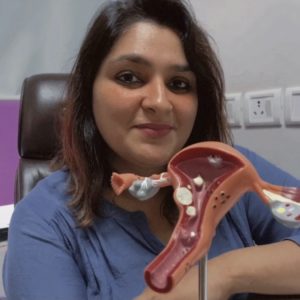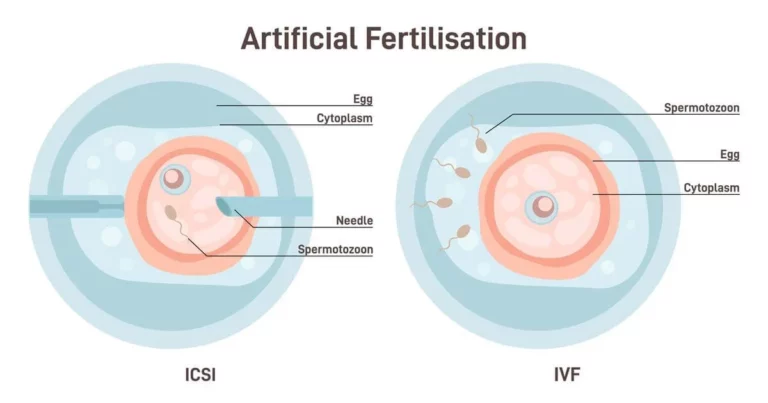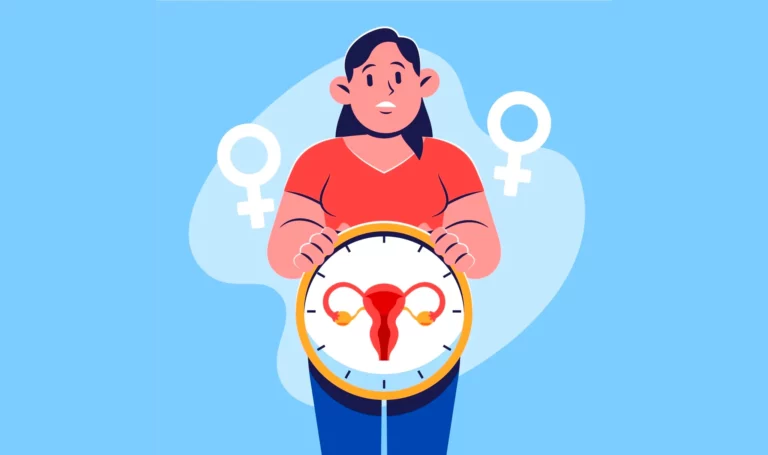If a woman is planning pregnancy, the HSG (Hysterosalpingography) test is often recommended by the fertility doctor to examine reproductive health. Therefore, a detailed understanding of this test, its procedure, cost, potential benefits, and associated considerations becomes necessary.
This article delves deep into the information about the HSG test, delivering a comprehensive guide for women considering this fundamental fertility diagnostic examination.
What is the HSG Test?
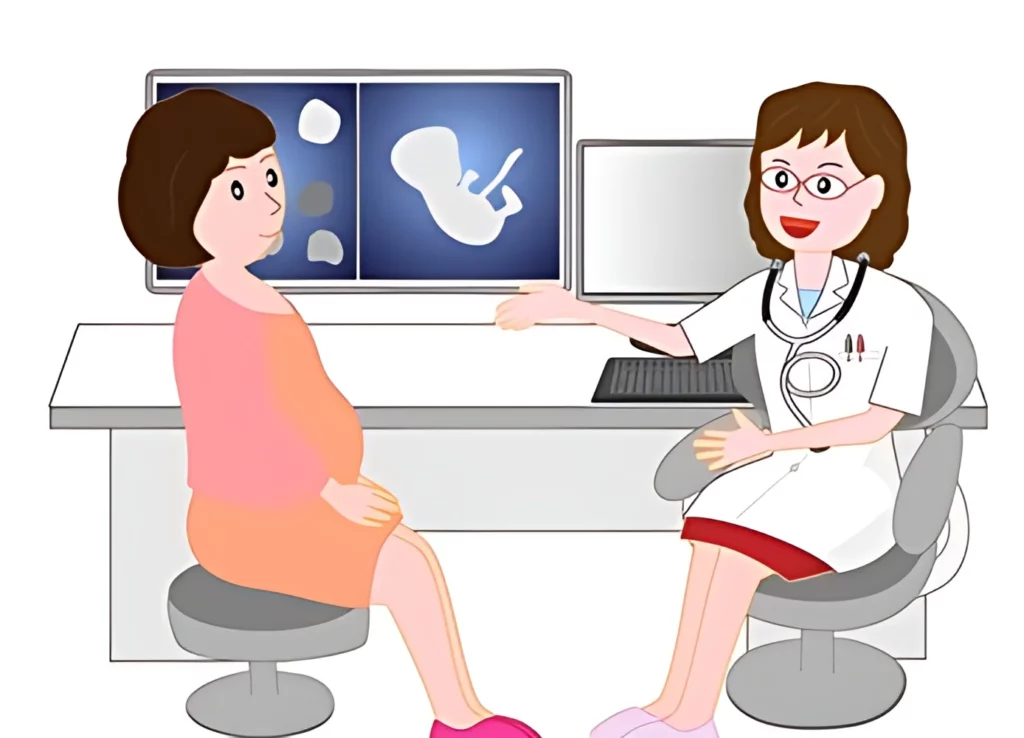
In gynecology, a HSG or Hysterosalpingography stands as a crucial fertility assessment, designed specially to examine a woman’s reproductive system and its health.
It is a medical imaging procedure that involves the use of contrast dye and X-ray imaging technology to get visuals of the uterus and fallopian tubes in women. The objective of this test is to identify any condition, obstructions and structural abnormalities in a woman’s reproductive system that might affect her potential of conceiving and delivering a healthy child.
HSG Procedure: Step by Step

HSG is a complex procedure that requires an expert gynecologist, radiologist or reproductive endocrinologist to carefully and precisely perform the test as follows:
1. Preparation
Before the examination, gynecologists generally advise women to take a pregnancy test to make sure she is not pregnant. Because, exposure to X-rays during pregnancy can be uncomfortable for the fetus and is generally avoided. Once ensured, the examination is scheduled during the first half of the woman’s menstrual cycle. Ideally between day 7 to day 10, to avoid any interference with a possible early pregnancy.
2. Patient Positioning
During the procedure, the woman is laid on her back on an examination table, with her feet placed in the stirrups for easy access to the pelvic area.
3. Cervical Cleaning
The gynecologist starts the procedure by cleaning the cervix and vagina, as a practice of minimizing the chances of any infection.
4. Speculum Insertion
Speculum is a device that healthcare providers use to examine the hollow openings in the body such as nostrils, ears, anus and vagina. In HSG, the gynecologist uses the speculum to access the cervix by inserting it into the vagina.
5. Catheter Insertion
Catheter is a soft, thin and flexible tube that is inserted through the cervix to the uterus during this procedure, to inject the contrast dye prior to X-ray imaging.
6. Contrast Dye Injection
Once the catheter is inserted into the uterus, contrast dye is slowly released into the uterus. This dye makes reproductive internal structure clearly visible during X-ray imaging.
7. X-Ray Imaging
After contrast dye is introduced to the uterus, X-ray imaging takes place. Real-time X-ray images are captured through the fluoroscopy machine that produces constant X-ray beams, providing dynamic images of the uterus and fallopian tubes.
8. Observation
Now, the gynecologist observes the movement of the contrast dye in the uterus and fallopian tubes in the fluoroscopy monitor, to assess the size and shape of the reproductive organs and if there are any blockages, abnormalities or malformations that might affect fertility.
9. Post-Procedure Care
After the procedure is complete, the catheter is removed and the woman is discharged with some post-procedure care discussed. Mild cramping, discomfort, and slight spotting vaginal bleeding can occur after the test. These discomforts are temporary and subside on their own in a day or two.
10. Results Discussion
Depending on the case, the gynecologist may discuss the early findings with the patient immediately or during a follow-up appointment. A more detailed analysis of the test may be discussed later.
HSG Test Price

Hysterosalpingography (HSG) test cost in India can vary depending on factors such as your location, healthcare facility, whether the test is performed in a government hospital, private clinic or a diagnostic center. Additionally, HSG test price may also vary based on whether the procedure includes the cost of the contrast dye, consultation fees, or additional services.
The average cost of a hysterosalpingography test can range from approximately INR 2,000 to INR 7,000. However, these are estimates and may vary from facility to facility, and case to case. It is always advised that you check with some good fertility clinics or diagnostic centres for the most accurate and up-to-date pricing information.
Keep in mind, since the cost of the HSG examination may be different for you, you should always consider a fertility clinic or diagnostic center that delivers a balance of good service, pricing and facilities. Referred to as the best IVF centre in Gurgaon, we, at Grace Fertility can deliver you a great diagnostic experience and even be the right companion throughout your pregnancy journey.
Benefits of HSG Test

HSG examination offers several benefits by evaluating the women’s reproductive health, especially when women have concerns related to fertility or recurrent pregnancy loss. Here are some of the benefits:
Thorough Assessment of Uterus
The examination provides a detailed view of the uterus which helps identify any structural abnormalities or malformations such as polyps, fibroids or septum (a wall-like structure inside the uterus), that may lead to inability to conceive or recurrent miscarriages. The examination can also assess the anomalies in the size or shape of the uterine cavity that may affect implantation of the fertilized egg.
Evaluation of Fallopian Tubes
Patency or openness of fallopian tubes is crucial for eggs and sperm to pass further in the fertilization and implantation stage. Blockages or abnormalities in these tubes can result in failed conception. Hysterosalpingography examination detects such fallopian tube obstructions.
Early Detection of Pregnancy Issues
If a woman is experiencing recurrent pregnancy loss and failing to conceive over and over again, Hysterosalpingography test can detect such issues within the reproductive organs and help in timely intervention, management and treatment.
Guidance for Treatment Planning
The findings of the test can be helpful for the fertility doctor to appropriately plan the treatment for the patient. In example, performing surgery to remove abnormalities in the uterus or start IVF (In-vitro fertilization) in case of tubal blockage.
Increased Pregnancy Odds
A healthy reproductive system escalates the chances of pregnancy, especially if fertility issues are addressed early based on the findings of HSG assessment.
Minimally Invasive
Compared to Laparoscopy surgery that requires hospitalization, involves use of anesthesia and incisioning, HSG assessment is a relatively non-invasive procedure for evaluating same fertility issues with minimal discomfort.
HSG Test Pain and Side Effects
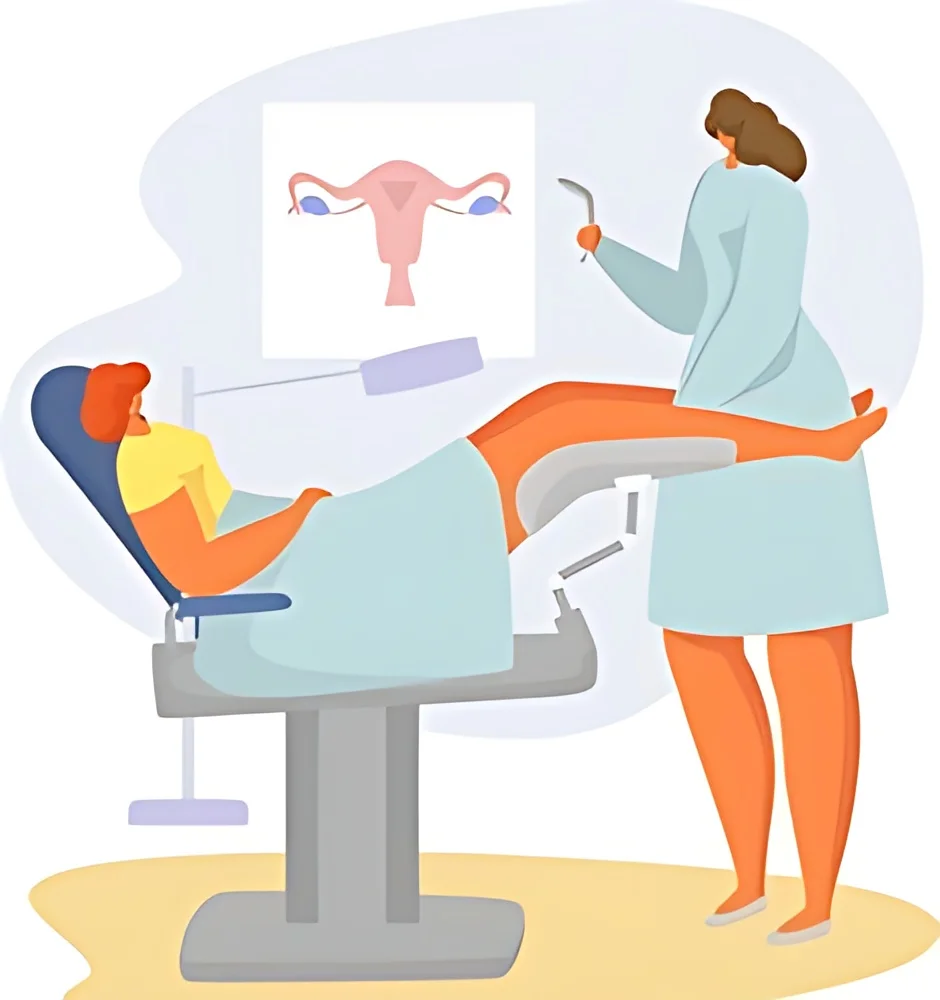
While the procedure itself is usually well-tolerated, some women may however develop some side effects such as:
- Pain or Discomfort: Mild to moderate cramping, discomfort or pain is common after the test. This is mostly temporary and will go away shortly after the test is completed.
- Infection: Though it is very uncommon, there is still a slight risk of infection following the procedure. One should follow any post-procedure care instructions given by the doctor to minimize this risk.
- Spotting or Vaginal Bleeding: Some women may experience light vaginal bleeding or spotting following the procedure. However, they are very normal and will resolve on their own.
- Allergic Reactions: Though such reactions are quite rare, women in some cases may trigger allergic reactions to the contrast dye used in the test.
It is important that you communicate openly with the doctor about any concerns or past experiences you have had following medical procedures. Based on the information you provide and your medical history, the doctor can manage any potential discomfort.
HSG Test Report Indications
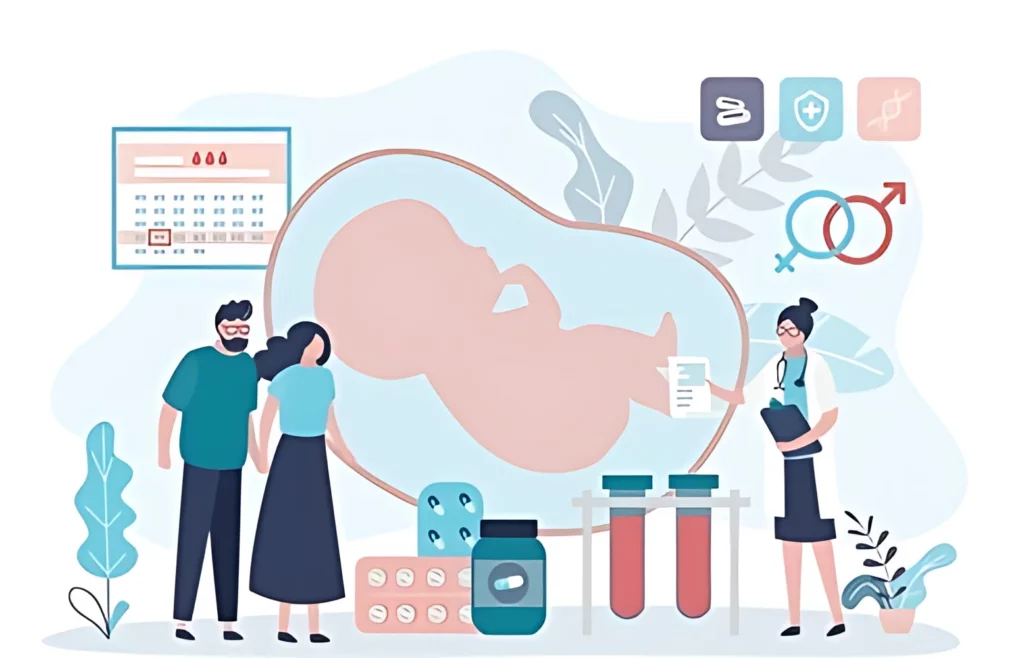
Normal HSG Report
A normal report can be a reassuring indicator that a woman has a higher chance of achieving and maintaining a pregnancy.
Abnormal HSG Report
An abnormal report can indicate an abnormality in the reproductive system such as blocked fallopian tubes, fibroids, polyps or septums. Such abnormality can hinder a woman’s potential to conceive and maintain a healthy pregnancy.
Symptoms of Pregnancy after HSG Test?
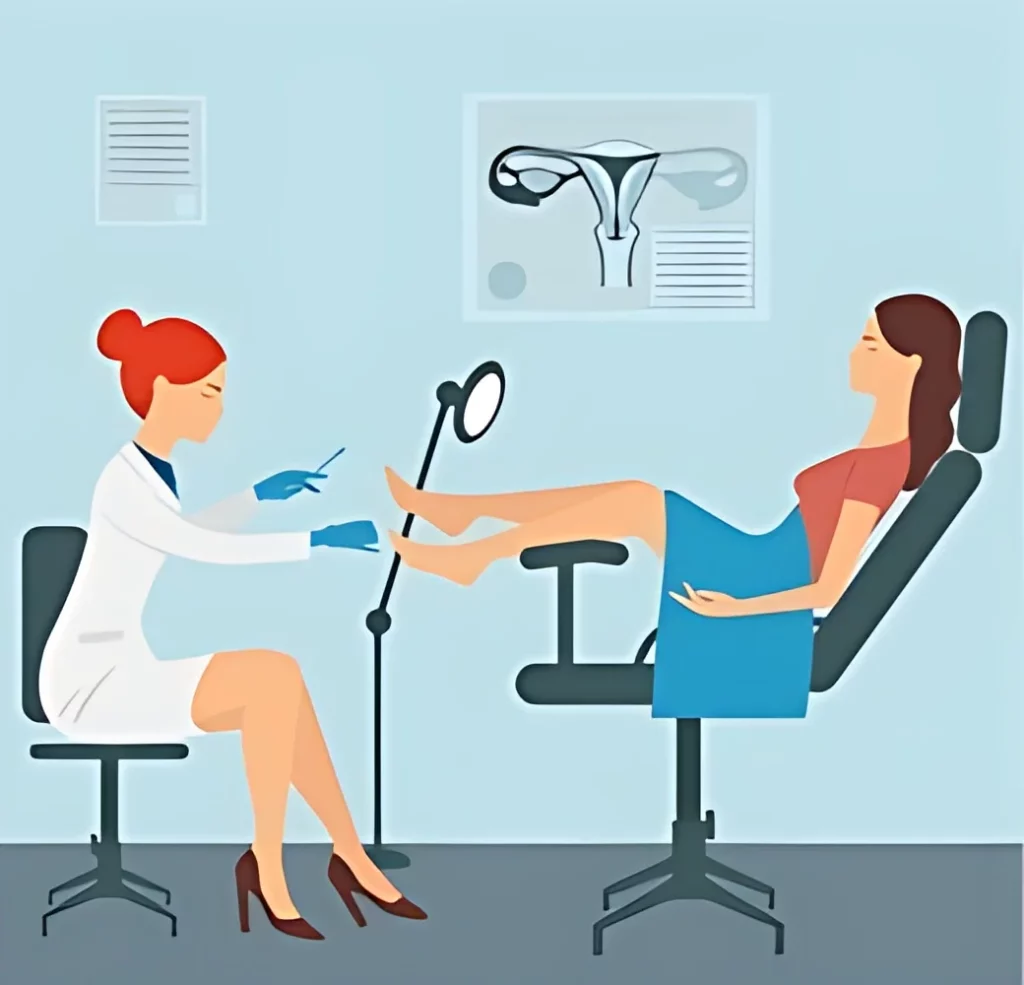
Though the HSG exam does not itself directly induce pregnancy, it is a reassuring indicator of a woman’s reproductive potential. A normal test report indicates a higher chance of pregnancy and an abnormal test report indicates an underlying reproductive condition that may lead to failed conception or pregnancy loss.
Common Concerns
Is the procedure painful?
Mild post-procedure symptoms such as cramping, discomfort, spotting and vaginal bleeding are common. However, they are temporary and will subside within a day or two. One can discuss with the doctor for pain management medicines during that period.
How long does the test take?
The procedure hardly takes 15 to 30 minutes, with some additional time for preparation and post-procedure analysis.
When can I resume normal activities?
The procedure is minimally invasive and one can resume her regular activities almost immediately. But, resting on the day of the test is better for minimizing potential discomfort and pain.
Are there risks associated with the test?
Though mild pain, cramps, and bleeding can happen, the procedure rarely causes any serious risks.
Conclusion
HSG is a great minimally invasive diagnostic tool to figure out pre existing reproductive concerns that may impair a woman’s ability to conceive and maintain a pregnancy. In this article, we discussed its procedure, costs, benefits, side effects, common concerns, and considerations. If you are struggling to conceive or having recurrent pregnancy losses, HSG can be a quick and effective fertility assessment.

